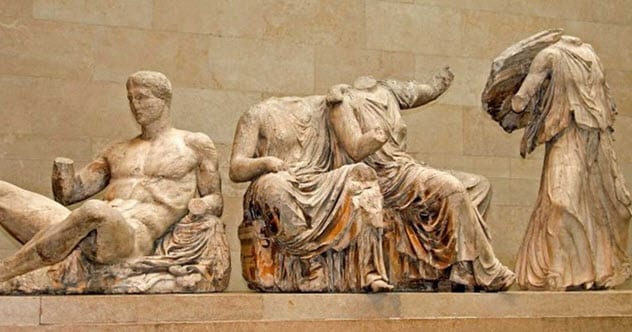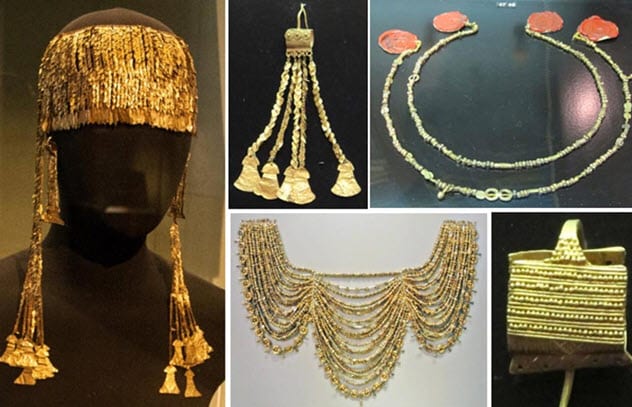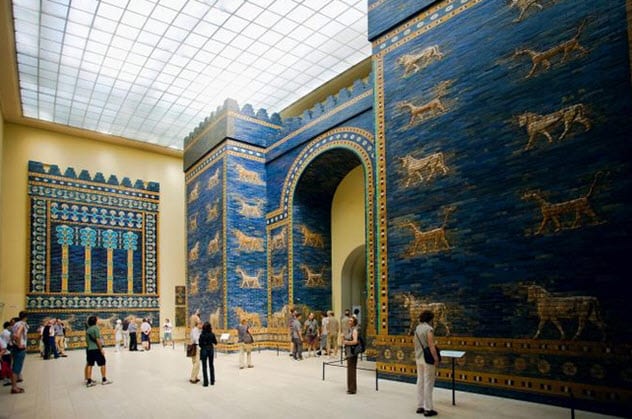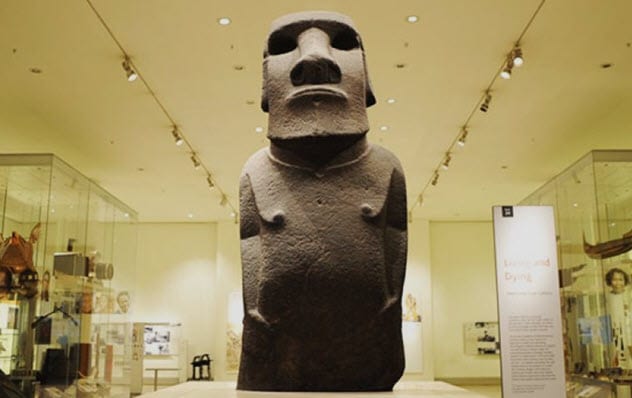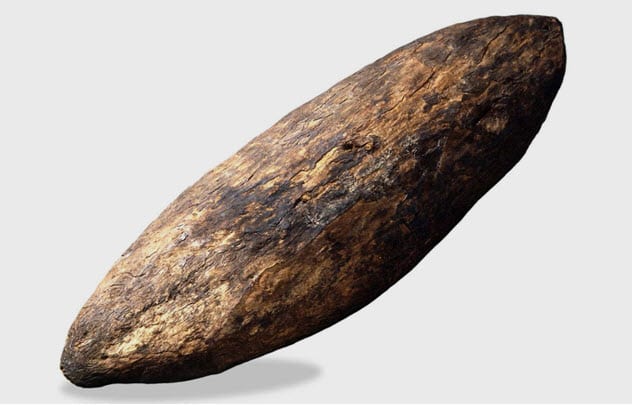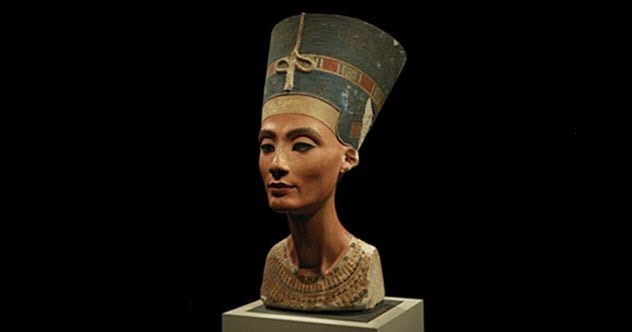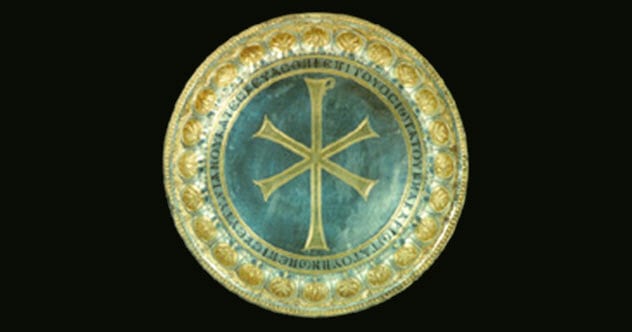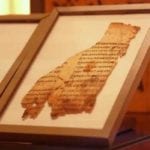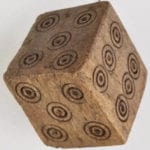Regrettably, many of these objects were lost or ruined. For example, thousands of mummies were unwrapped for entertainment at parties in 19th-century England. But other items found their way from one owner to the next until landing in a museum. Though acquired through questionable methods, these cultural treasures remain on display in foreign lands hundreds or thousands of years after their thefts. Here are 10 such stolen treasures on display at museums. 10 Stolen Ancient Artifacts That Carried Curses
10 The Elgin Marbles
Taken From Greece And Displayed In England
The Elgin Marbles are a collection of Greek sculptures and architectural details that were originally part of the Parthenon in Athens, Greece. During the rule of the Ottoman Empire, the ambassador to the empire, Thomas Bruce, 7th Earl of Elgin, arranged to have the marbles removed and taken back to England. He was concerned about the damage being done to them and hoped to safeguard them from being destroyed by Ottoman indifference. So, in the early 19th century, the collection was packaged and sent to England. Mostly, it arrived safely. (The cargo on one ship sank into the water during a storm, but the sculptures were eventually recovered from the seafloor.)[1] The removal of these treasures was met with an outcry from the people of Greece and even Lord Elgin’s countrymen, including the famous poet and politician Lord Byron. Within a few short years, the entire collection was purchased from Elgin by the English Crown and eventually displayed in the British Museum in London. Lord Elgin’s original concerns about damage under Ottoman rule became a moot point in 1832 when the Ottomans recognized Greece as an independent nation. As a result, Greece could control the marbles and ensure that they were protected by people who appreciated Greek cultural heritage. Yet the collection was not returned. For some time, the British argued that no adequate facilities existed in Greece to display Elgin’s Marbles. But in 2009, a $200 million, 21,000-square-meter (226,000 ft2) museum was constructed near the base of the Acropolis. At one point, the British Museum offered to loan the marbles to the Acropolis Museum on the condition that they acknowledge England’s ownership of the artifacts. This proposal was rejected, and the marbles remain on display at the British Museum in London.
9 Priam’s Treasure
Taken From The Ottoman Empire And Displayed In Russia
The ancient city of Troy (in what is now the country of Turkey) was excavated by a German man named Heinrich Schliemann when archaeology was in its infancy. Schliemann was obsessed with finding objects mentioned in the Iliad and the Odyssey, ancient epic poems by Homer that centered around events associated with a legendary war between Greece and Troy. Ultimately, Schliemann succeeded. He found the ancient city of Troy and a forgotten treasure trove that included precious jewelry, gold headdresses, masks, and other artifacts.[2] Since then, Schliemann’s methods have been condemned by archaeologists as an insult to their work. While digging for treasure, he irreparably destroyed layers of the ancient city. In addition, Schliemann had no intention of sharing his discovery with the Ottoman Empire, from whose land he smuggled the artifacts. After a few years on exhibit in London, the treasure trove went to Berlin, Germany, in 1881. The items were displayed at Kunstgewerbe Museum and then at the Ethnological Museum. However, after the end of World War II and the defeat of Germany, the artifacts disappeared. Eventually, in 1993, it was revealed that the collection had fallen into the hands of the Soviet Union’s Red Army. They had taken the artifacts as spoils of war. Later that decade, they were again displayed—in Russian possession. Today, the majority of Priam’s Treasure is on exhibit at the Pushkin Museum in Moscow.
8 Ishtar Gate
Taken From Iraq And Displayed In Germany
The Ishtar Gate is an imposing structure that was once one of the many entrances to the inner city of Babylon in what is present-day Iraq. Constructed by King Nebuchadnezzar II, the gate was dedicated to Ishtar, the Mesopotamian goddess of love and war. It was made with blue glazed bricks assembled in a mosaic that included lion, aurochs, and dragon reliefs. Between 1899 and 1917, the structure was excavated and moved to Germany. Eventually, part of the gate was reconstructed and displayed in the Pergamon Museum in Berlin.[3] Like so many archaeological treasures taken from their homelands, the Ishtar Gate is a disputed piece of history. Although requests for its return have been made by the Iraqi government over the years, it remains in Berlin because it was taken legally at the time. Between 1533 and 1918, the country now known as Iraq was under Ottoman rule. Then the area was under British control for some decades. During that time, many artifacts were taken back to Europe freely under the laws of the Ottoman and British Empires. However, when Iraq gained its independence, the laws governing its cultural heritage changed. By 1936, the laws allowed foreign archaeologists to excavate and to publish research based on what they found, but all recovered artifacts were owned by Iraq. In 2013, an Iraqi man protested at the Pergamon Museum by holding a sign in front of the Ishtar Gate that read, “This belongs to Iraq.” The Ishtar gate and associated artifacts are on display in many museums around the world.
7 Rosetta Stone
Taken From Egypt And Displayed In England
The Rosetta Stone is a slab of granitoid rock that has the same message written on it in three languages: Egyptian hieroglyphics, mainly used by priests; Egyptian demotic, used for everyday purposes; and ancient Greek. Before the Rosetta Stone’s discovery, hieroglyphics were a mystery to scholars. However, as the artifact had the same message inscribed in a language that scholars already understood, they were able to break the code and finally decipher the hieroglyphics.[4] This unique artifact was discovered in 1799 during Napoleon Bonaparte’s Egyptian campaign near the town of Rashid (Rosetta), which explains the name. It came into the possession of the British when they defeated Napoleon in Egypt two years later. Then they took the Rosetta Stone to England. Egyptian officials have demanded its repatriation for decades. Egyptian archaeologists have also tried to convince the British Museum in London to return the artifact but to no avail. It is still displayed in London to this day.
6 Hoa Hakananai’a
Taken From Rapa Nui (Easter Island) And Displayed In England
Rapa Nui (aka Easter Island) is famous for its giant carved figures called moai that were made from 1100 to 1600. During those 500 years, the moai became increasingly complex and whole crowds of them were constructed and erected—approximately 900 in total. With their backs to the ocean, they watched over their island home. Most were carved from the island’s tuff, but a few were made from basalt. One basalt figure considered a masterpiece is called Hoa Hakananai’a, which aptly translates to “stolen friend.”[5] Believed to have been created sometime around AD 1000 to AD 1200, Hoa Hakananai’a remained on Rapa Nui for hundreds of years. Then, in 1869, it was carried to a different island named England and presented to Queen Victoria. From there, Hoa Hakananai’a was given to the British Museum in London where it remains to this day. However, the moai are more than art made of basalt and tuff. The people of Rapa Nui believe that the moai contain the spirits of their ancestors. In 2018, the governor of Rapa Nui visited England and tried to negotiate the return of Hoa Hakananai’a, even if only as part of a loan. She said, “We all came here, but we are just the body—England people have our soul.” 10 Stolen Pieces Of Art That Have Never Been Found
5 The Gweagal Shield
Taken From Australia And Displayed In England
About 250 years ago, British explorer James Cook arrived in what later became known as Botany Bay in Australia. He was met by two local men carrying shields and spears. In his journal, Cook reported being attacked by these men with stones and spears. This forced his crew to discharge their firearms and wound the attackers, who fled and left behind some of their equipment. From the Gweagal clan’s perspective, though, Cook’s crew were unannounced visitors and needed to negotiate permission to enter the clan’s country. Sometimes, this would happen through dialogue. Other times, it would occur through spiritual ceremony. However, Cook didn’t know about or understand the local customs. So this meeting ended in hostilities during which the Gweagal Shield was dropped. Eventually, this shield made it back to James Cook’s homeland and was displayed alongside many other artifacts in the British Museum.[6] Since 2016, Rodney Kelly, a possible descendant of the man who dropped the shield during the skirmish with James Cook, has rallied for the shield’s return to Australia. In the last four years, he has made repeated visits to England to advocate for the shield’s repatriation. As of this writing, his calls have landed on deaf ears and that seems unlikely to change. According to British law, it would be illegal to return this artifact and many others. The British Museum Act of 1963 forbids the museum from permanently disposing of its holdings with only rare exceptions.
4 The Koh-i-Noor Diamond
Taken From India And Displayed In England
Until diamonds were discovered in Brazil in 1725, India was the only real source of them throughout the world. Often sifted from riverbeds in alluvial mining, gemstones held a prominent place in Indian culture. The world’s oldest texts on gemology originate in India. Jewels were the most important indicators of status in ancient Indian courts, with different gems representing distinct levels of hierarchy. From this golden age of gems came the diamond that would eventually be known as Koh-i-Noor. Originally a magnificent 793 carats, it was trimmed to 186 carats while owned by the Kakatiya Dynasty and finally to 105.6 carats when cut and polished in England.[7] When India was under Mughal rule, the Koh-i-Noor diamond was used as part of a jewel-encrusted throne that took seven years to build and cost four times as much as the Taj Mahal. Later, the throne and the Koh-i-Noor were taken to the region now known as Afghanistan. For ages, the diamond shuffled between owners in bloody conflicts until it finally landed in sight of the British Empire in 1849. The empire signed a treaty that included the Koh-i-Noor becoming its property. The treaty was signed with a 10-year-old boy king, who also gave up his sovereignty. From there, Queen Victoria took possession of the Koh-i-Noor. The diamond was put on display for the British public, but they were underwhelmed. Many people couldn’t believe that it was anything more than a simple piece of glass. So the diamond was cut and polished, losing over 80 carats in the process. Eventually, it was included in the crown jewels of England, where it remains to this day. India, Pakistan, and even the Taliban have all make claims to this unparalleled diamond.
3 Bust Of Nefertiti
Taken From Egypt And Displayed In Germany
Ancient items usually show their age. Over time, colors fade, cracks develop, and repeated use or neglect damages what was once perfect. For at least one artifact, though, time seems to have had relatively little effect. Around 1340 BC, a bust of Queen Nefertiti was constructed of limestone, gypsum, and wax in Egypt. Unlike so many artifacts of the time, this bust of Queen Nefertiti has aged gracefully. Its shape remains largely undamaged, its colors are intact, and the face of the queen appears unsullied by age. It is rare to find so pristine an ancient figure in the modern era. The bust was unearthed by German archaeologists in 1912. The following year, it found its way to Germany and has stayed there ever since.[8] In 2011, the Egyptian Supreme Council of Antiquities sent a request to the Prussian Cultural Heritage Foundation for the artifact’s return. The foundation runs the museum in which the bust is now displayed. They replied that the bust was obtained legally and Egypt has no grounds to reclaim it. The Supreme Council of Antiquities explained, “This request is a natural consequence of Egypt’s long-standing policy of seeking the restitution of all archaeological and historical artifacts that have been taken illicitly out of the country.” The foundation’s president disagreed: “[The bust of Nefertiti] is and remains the ambassador of Egypt in Berlin.”
2 Kumluca Treasure
Taken From Turkey And Displayed In The United States
This collection of over 50 pieces consists mostly of silver religious artifacts such as crosses, candlesticks, and dishes. It is thought to have all originated from a single church. However, the collection was excavated in a clandestine and likely illegal way which makes an exact dating of the artifacts difficult. Nevertheless, they are of Byzantine origin. Uncovered in the 1960s, these relics were smuggled out of the country and into the United States. However, a 1906 Ottoman law dictates that all antiquities discovered in Turkey’s territory remain the property of the government. It is not legally clear if modern-day Turkey can use this version of its cultural property protection law to regain these items in an international setting. The collection has been split apart and is now displayed in several different museums. These include the Getty Museum, the Cleveland Museum of Art, the Metropolitan Museum of Art, and the Dumbarton Oaks Research Library and Collection at Harvard University.[9] As early as 1970, the Turkish government requested the return of the Kumluca Silver, but they were ignored. Since then, many requests have been made. As of this writing, no museum holding any pieces of the Kumluca Silver has returned their holdings to Turkey. In 2012, Dumbarton Oaks asserted in a press statement that they have the legal rights to the artifacts in their possession.
1 Old Fisherman From Aphrodisias
Taken From Turkey And Displayed In Germany
So much art celebrates the incredible. Statues of heroes from mythology look down on us from atop their perches in many museums, but one valued statue, the Old Fisherman, is a more down-to-earth consideration of humanity. Created around 200 BC, this artifact has a complex history, and what the marble statue represents is far from mythological. The gaunt muscles and tired eyes of the Old Fisherman capture the story of his ancient life in stone. In 1904, only the fisherman’s torso (wearing a loincloth) was discovered by French engineer and amateur archaeologist Paul Gaudin. This occurred during an excavation of the public baths of the ancient Greek Hellenistic city of Aphrodisias (in what is now Turkey). Eventually, Gaudin’s heirs sold the torso to the Pergamon Museum in Berlin. The head of the statue was discovered in a subsequent dig in 1989. However, it remains in Turkey. So a plaster cast of the head was added to the marble torso in the Berlin museum.[10] Though repeated calls have been made for its repatriation, the Old Fisherman is still in Berlin. It has been displayed at the Pergamon Museum and the Altes Museum. Ertugrul Gunay, Turkey’s cultural minister until 2013, once said, “Artifacts—just like people, animals, or plants—have souls and historical memories. When they are repatriated to their countries, the balance of nature will be restored.” 10 Stolen Cultural Artifacts That Were Recovered
